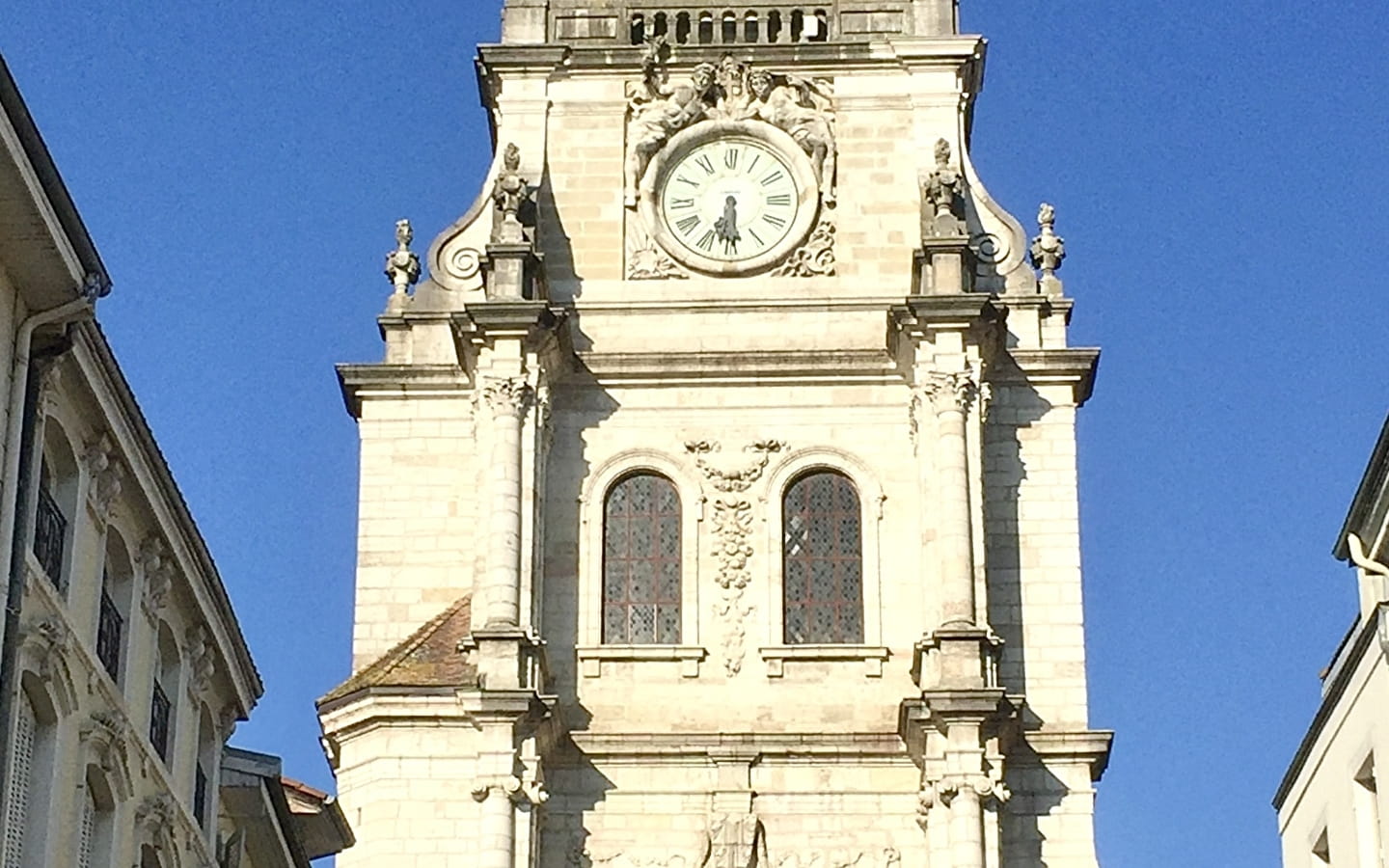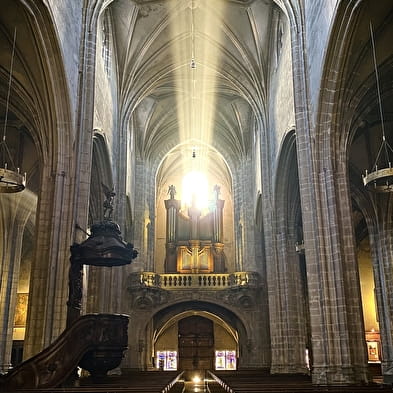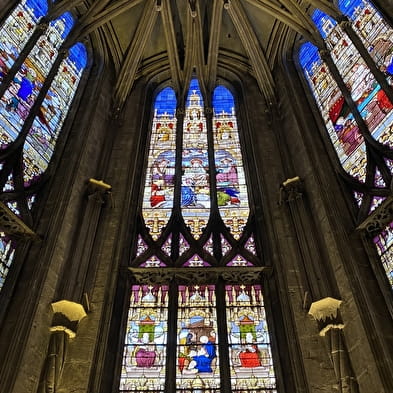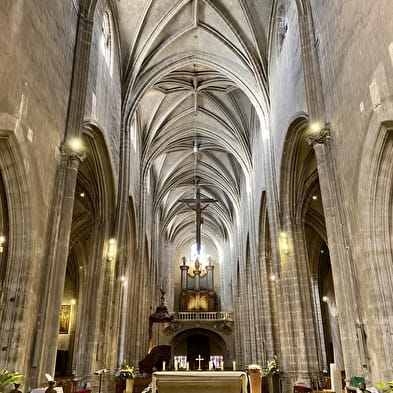
Co-cathédrale Notre-Dame
Bourg-en-Bresse parish church.
The exact name of this church is "collegiate co-cathedral of Notre-Dame de l'Annonciation". The term "co-cathedral" was officially coined in 1992, to define Notre-Dame as the secondary seat of the bishopric of Belley-Ars, which returned to Bourg in the 1970s after more than 4 centuries on the other side of the département. However, it was to be a cathedral that Notre-Dame was erected in the early 16th century, but the vagaries of history and the various conflicts between Francis I and Charles V decided otherwise, and Notre-Dame definitively lost its cathedral title in 1534.
The beginnings of the construction are rather vague, and although work was certainly initiated at the end of the 15th century, 1505 is the official date, supported by a bull from Pope Julius II of the same year. The aim was to enlarge and embellish a Romanesque pilgrimage chapel on this site, already dedicated to the Virgin and known as the Chapelle Sainte-Marie de Bourg, whose origins date back to the 13th century. Legend has it that a shepherd found an icon of the Virgin Mary here, which, despite being deposited in the parish church of the day (located just a stone's throw from the center of the town at the time) systematically returned to the place of its discovery! It was as if Mary wanted to show the Burgundians of the Middle Ages that she wanted to be venerated here. The healing of Count Aymon of Savoy, who came to implore Sainte-Marie de Bourg, only strengthened Burgers' devotion to their patron saint. In the 19th century, a chapel to the right of the choir was completely refurbished and dedicated to the Virgin Mary, who over the years became known as the Vierge Noire, and is now venerated as Notre-Dame de Bourg, the town's patron saint. Her wardrobe has expanded over the centuries, and her vestments and the colors with which she is adorned depend on the liturgical season.
Many of the church's furnishings are remarkable, such as the triptych donated by Nicolas Chichon (1523), the choir stalls (18th century), the Black Madonna altarpiece (19th century), Armand Calliat's white marble high altar adorned with enamel and gilded bronzes (19th century), Fyot's pulpit (1760), the great organ (17th-20th centuries), and the large choir windows by Eugène Oudinot (19th century)... Don't miss the hanging keystone and the tetramorph overhanging the choir, the Saint-Crépin et Saint-Crépinien stained-glass window (1530), the only original stained-glass window, and the contemporary stained-glass windows (1920s and 1960s).
The bell tower, decapitated during the Terror, was rebuilt in reinforced concrete by departmental architect Tony Ferret, between 1909 and 1911. To mark the occasion, the belfry was fitted with 4 clock dials and a set of 23 bells; 17 bells from the Paccard company in Annecy were added to the 6 bells already in the belfry, most of which were connected to an automatic carillon still in operation today.
The entrance portal is crowned by a wood-carved medallion depicting the Annunciation (under which the 15th-century cathedral was erected), surmounted by a conch in which is set a statue of the Virgin and Child by Coysevox (1855).
- Pets not allowed
- Parking
- Specific theme activities
From 01/01/2025 to 31/12/2025









